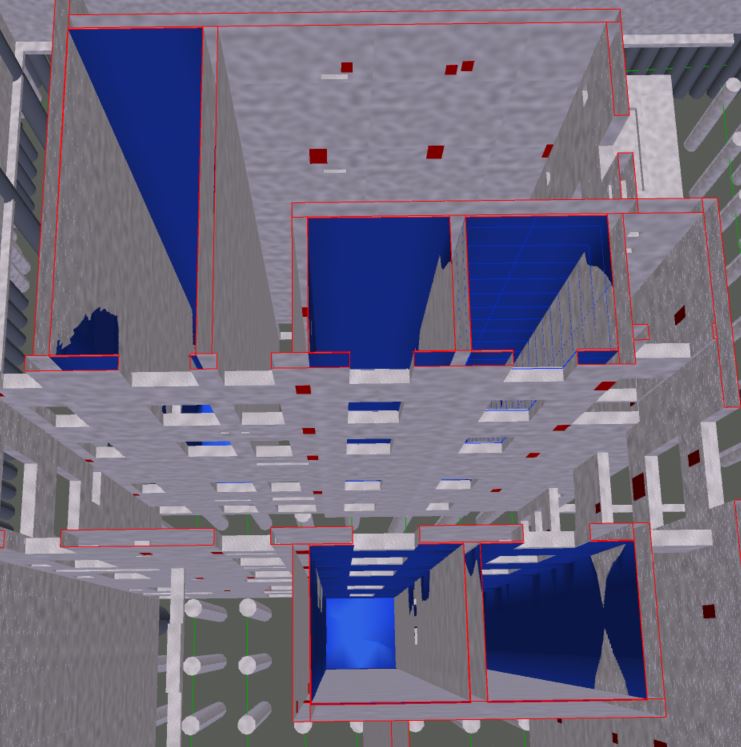- Client: Bruntwood/Vita Group
- Lead Contractor: John Sisk
- BIM Tools: Autodesk Revit and Navisworks, drones, 360-degree cameras
The £750m Circle Square development, located at the heart of Oxford Road Corridor innovation district in central Manchester, is a 2.4 million sq ft new urban neighborhood with facilities for education, technology, business and culture.
Two key projects, worth a total £240m, are being delivered by John Sisk. The circa £100m first phase of the commercial development at Circle Square includes three buildings with offices, restaurants, coffee shops and entertainment venues, while the £140m Affinity Living residential development comprises around 680 apartments spread across two buildings.
With no BIM requirements from either client, Sisk chose to drive and invest in BIM on the project based on the benefits it had achieved on previous projects. This is the contractor’s first BIM project delivered entirely in-house, with only limited input from consultants.
Nidaa Alazmeh, digital engineer at John Sisk and BIM lead on both projects, told BIM+: “Whatever you have to spend on BIM it pays for itself in the longer term, due to the improved accuracy of work and the higher quality of the end product, so we did not restrict the BIM spend on this project.”

Sisk chose to drive and invest in BIM on the project
Sisk appointed the design team which produced 3D models used for full design coordination and clash checks. Regular BIM meetings and workshops were carried out to ensure strong collaboration and integration across teams. Subcontractors were engaged at a later stage to model all steel fabrication for the structure, which was also integrated into Navisworks.
The tight city centre site had limited space, so an overarching master BIM model of the entire Circle Square site was produced to improve ongoing construction coordination, with engagement from site and project management teams and the underground drainage subcontractor.
The model mapped all the existing conditions underground, including the piled foundations of the former BBC New Broadcasting House, and all above-ground temporary works, including the positions of cranes and heavy plant.
“The master model was devised to iron out any potential issues on site and ensure that works go to plan,” said Alazmeh. “The detailed map of underground obstacles has eliminated issues with groundworks, and above-ground work is progressing in line with the programme and we are not experiencing any delays or major rework.”
At the time of writing, the structure for both schemes is almost complete, and the facade for the Affinity Living scheme is being installed.
BIM innovations extended to the use of reality capture for onsite progress and quality tracking. Drones were used on a weekly basis during the early stages of site work to enable planners and project managers to monitor cut-and-fill information and check volumes of material.
Static laser scanners were deployed to capture lift shafts and staircases to check they aligned with design information with no shift from the grid or verticality issues. The resulting point clouds were fully integrated into BIM.
360-degree cameras were deployed to rapidly check for quality issues during the delivery of bathroom pods in the residential blocks. “The ability to capture the entire space with a single click saved time and effort compared to our previous method of having an engineer take numerous photos inside each pod,” said Alazmeh.
The many benefits of BIM were matched by some lessons learnt. On future projects Sisk would ideally begin BIM implementation and planning earlier on, says Alazmeh, to maximise engagement from suppliers, designers and subcontractors.
No asset information model was produced for Circle Square, which limited the long-term benefits of BIM data for the clients. “We would make sure in future to work more actively with the client to understand their information requirements, depending on their asset management approach,” she added.
BIM formed part of Sisk’s community engagement. Alazmeh ran a five-session training programme at a local high school designed to introduce Year 8 students to BIM and digital construction technologies, including practical Revit training in a computer lab.
“It was really great, the young generation are so enthusiastic and quick to engage with new technology,” she concluded.















